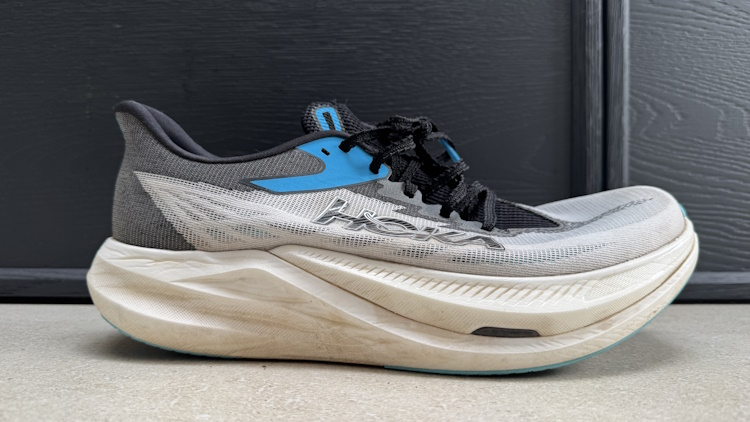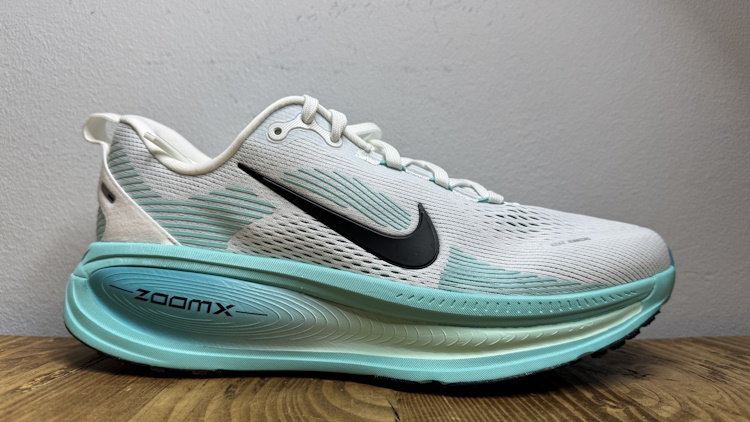By Kieran Alger
Starting to run can be hard. Finding the motivation, building the fitness, growing the habit – these are all things that can feel quite daunting. Then there’s choosing the right running shoes.
With so many styles and brands, all with their own technologies, foams and jargon, picking your perfect running shoe can feel like another hurdle to jump. But don’t worry. We’ve got you. We know the importance of lacing up the right footwear and we’re here to help with our pick of the best running shoes for beginners.
If you click, or buy from, links on this page, we may receive compensation. Learn more

Avoid Beginner Mistakes - What to Check Before Buying Running Shoes
Whether you’re jogging for general fitness or taking your first training steps on the road to city marathon, it’s important to remove all the little barriers that make you question if you really want to run. So picking the right running shoe is mission critical. You need a shoe to offer the kind of comfort you love to lace up.
When it comes to running shoes, there is quite literally no one size fits all. The best shoe for you depends on your physique (including footshape), running style, the terrain you’ll tackle and how many miles you plan to run.

But top priority is comfort. A shoe should instantly feel like it belongs on your foot with a good amount of room in the toe box, heel collars and uppers that hold you securely with no sliding and no rubbing. Remember: if it’s uncomfortable when you try it on, chances are it’ll be uncomfortable after a few miles. Very few shoes ‘break in’.
As a beginner, the chances are you can’t be sure if you’ll catch the running bug (not everyone does) and if you’re not sure how serious you’ll become, it’s probably not worth spending megabucks for a pair of those high tech carbon plate running shoes. Plus a bigger price tag doesn’t mean better shoes. There are plenty of great running shoes for under $150.
6 Best Running Shoes for New Runners
Now without further ado, here’s our pick of the best entry-level running shoes.
1. ASICS Megablast - Best Daily Trainer

Also Available at
ASICS
If you want a shoe that will happily see you through all your training runs, from gentle plods to faster-paced sessions, the Megablast is a solid option. A great all rounder that’s a close rival for the Superblast 2.
A super-soft and bouncy ride, on slower, easier runs the FF Turbo Squared foam offers a big dollop of pillowy softness underfoot along with some bouncy energy. I generally prefer a slightly stiffer shoe but if cushioned comfort is your bag, this is a winner.
When you push the pace a bit – think a medium-fast run rather than an all-out-effort – it offers a lovely, bouncy energy to help you power forwards, great if you’re starting to add some speedwork to your training.
The flip side of that foam though, is there’s not as much stability as you find in some daily shoes. If you need more support, you might prefer something like the Superblast 2 instead.
It’s also worth trying on a couple of different sizes to find your perfect fit. Over longer runs, I had some slight rubbing on the outside of my little toes, so going half a size up could be the answer.
2. New Balance 1080V14 - Best Cushioned

Also Available at
Zappos ; New Balance
With its stacked and rockered midsole, airy mesh uppers and comfort-tuned uppers, the 1080 V14 provides a plush, cushioned ride that’s ideal for anyone just starting running.
A great workhorse for beginner runners, it’s a reliable, daily trainer with a bit of added pop from the stiffer forefoot, which helps power you forwards as you toe off. The big stack of Fresh Foam X midsole balances road protection with energy return and responsiveness, and there’s plenty of padding around the heel collars and gusseted tongues to prevent rubbing.
These are super-comfy shoes that are built to last, with durable rubber patches on the heels to reduce wear and tear as you build up the miles.
While this gives a more ‘wrapped’ feel, keeping your foot in place as you run, if you’ve got wider feet or you want more length, maybe consider half a size up or look at the wide option.
3. HOKA Arahi 8 - Best for Stability

All the jargon can be hard to get your head around when you first start pounding the pavements. And a term that often leaves runners scratching their heads is pronation.
In a nutshell, pronation refers to the way your foot lands and distributes impact when you’re logging the miles. And if you overpronate, it’s something you might want to consider when choosing shoes.
Overpronators tend to land on the outside of the heel and then roll inward. Over time this can cause foot and leg issues, so a stability shoe, which helps keep any excessive movement in check, could be the answer. And the Arahi 8 is a cracker.
Stability shoes can be on the heavier side but this is a softer, lighter and more agile choice than most, while still offering plenty of cushioning and protection.
HOKA trainers can lean towards a narrower fit, but this is definitely roomier than many of its stablemates and if you’re particularly broad of foot, there’s also a wide option.
4. HOKA Carbon Rocket X3 - Best for Race Day

Stripped-back super shoes aren’t just for elites. They offer propulsive power and efficiency gains that can give many runners the edge when chasing PRs. And if you’re looking to take your first foray into the world of carbon-plated wonder, the Rocket X3 is a great option.
Super shoes tend to work best when you’re running with your best upright, punchy form on race day. When you tire, they can feel unstable and hard to control underfoot. But the Rocket X3 is less aggressive and more accessible than many other carbon racers, giving you back some of that control even when your form slips.
It’s also reliable and durable enough to see you through faster training runs as well as race day efforts. HOKA says the Rocket X3 is designed to deliver “speed, long-haul comfort, and race-day stability” and it hits those notes well.
5. Nike Vomero 18 - Best All-Rounder

Also Available at
Amazon
I keep putting this shoe on when I’m supposed to be testing other shoes – which speaks volumes about how much I enjoy it.
From the giant 46mm stack of foam, to the big, soft, padded heel collars and tongues, everything about the Vomero 18 is geared towards soft, plush comfort. The dual foam set-up – with ZoomX, Nike’s lightest most responsive foam, on top of ReactX, which offers high energy return with a lower carbon footprint – makes for a reliable, stable, cushioned ride that has a little pop.
It’s ideal for easy-mile cruising but also has a bit more to it when you move up the pace on those faster training runs, successfully walking the tightrope between soft and cushioned without being leg-sapping or sinky. And while Nike says it’s designed for everyday runs, I think it could be a great shoe for a first time marathon runner too.
A brilliant all-rounder, with a disappearing fit that lets you get on with business, this is what I call a 'suitcase shoe’. If you could only pack one trainer, this one covers a lot of bases. While appearance isn’t everything, like most Nike shoes, it’s also a bit of a looker.
6. Brooks Ghost Max 3 - Best for Heavy Runners

If you tend to land heavily when you run, a cushioned shoe will help protect your body from some of that joint-jolting pavement impact. And if there’s one thing the Brooks Ghost Max 3 excels at, it’s cushioning.
Its big old stack of DNA Loft V3 nitrogen-infused midsole is like a cloud of comfort and helps decrease pressure underfoot. You also get a smooth and efficient ride thanks to the GlideRoll Rocker, which helps move you along when you’re picking up the pace.
The Max also has a broader base for added stability and extra heel support. This does mean you’re gaining a few ounces in shoe weight (close to half an ounce compared to the Ghost 17 to be precise) but while the Max 3 isn’t the fastest shoe on the block, it feels secure, roomy and stable.
A reliable companion for everyday training, it’s also great for walk-run efforts or daily strolls.

Leave a Reply